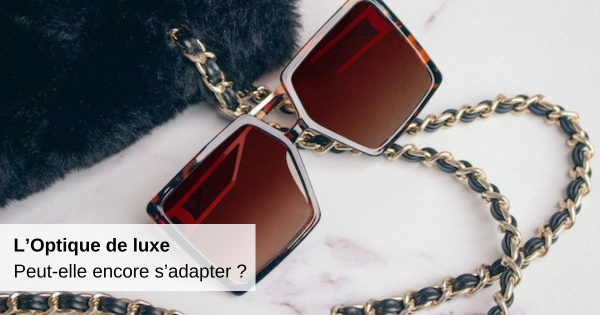Can luxury optics still adapt?

The strength of luxury lies in its colossal means , which ultimately allow it to embark on any trajectory. However, faced with a business that aims to be more responsible, where digitalization makes processes more transparent, we are entitled to ask ourselves the question: can luxury optics take the turn that we expect of it? Will the pressure for fairer and more adapted commercial practices, as well as opening up to other markets, come with it? We're trying to find out more.
Has luxury optics undergone its revolution?
While the Covid-19 pandemic forced certain brands to remain closed, one could have imagined that luxury boutiques would be the most affected, as their experience is materialized by the physical presence of the customer in store, whether to buy clothes, bags, jewelry or glasses. In the end it didn't happen. Luxury has undergone a significant digital transformation , and we have gone from 4.3 billion euros in sales per year in 2010 to more than 35 billion in 2020.

No problem then, to adapt in a digital environment which seemed to benefit the most daring. Easy, one could say, as the resources of luxury brands are titanic. But it wasn't enough to sell your products on the web to call it a revolution. It is especially in the customer experience that the transformation has taken place in depth. After-sales service, guarantees of authenticity in digital form, privileged sales, or even the famous “capsule collections”, these ephemeral collections promoted on social networks, dynamited the experience, proving that good ideas were not simply the strength of start-ups.
What about ethics in all of that ?
Faced with the proliferation of fashion brands, and in particular the boom in so-called "fast-fashion" brands, luxury has the merit of offering quality and durability to its products. Unfortunately, the trend faced with an offer that changes regularly (and luxury optics is one of them), is the risk of seeing despite strong material durability, a strong feeling of weariness, again amplified by the speed of the networks social.
This is the difficulty for the luxury sector, and particularly for optics. Because now, we want to see behind the product, see what happens there, who made it, in what way and with what materials. Demand demands eco-responsibility , without which justifying the price by “simple” quality is no longer enough. As we can read in the latest issue of L' Essentiel de l'Optique , "the value of the product now lies in the overall process." It is even estimated that 80% of the value of a product lies in its message! An observation that can be difficult to accept when you have worked for a long time on the quality of your products.

In the meantime, we can see that certain luxury players have initiated significant programs. Chanel aims with its “Mission 1 degree 5” program to reduce its greenhouse gas emissions by 50% by 2030. The Kering group, which owns numerous luxury brands with its Kering Eyewear division, wishes to achieve carbon neutrality in 2050. In 2019, Hermès announced that 10% of the variable remuneration of its manager Axel Dumas will be subject to CSR criteria from 2019.
Optics luxury , although it has made undeniable progress, still needs to work on the subject. It will also have to anticipate the accusations of greenwashing which it risks, more than any other sector, having to face. But nothing is impossible. Commerce is changing and luxury optics has the means to adapt. We will see in a few years to what extent it has achieved this.
Sources: Essentiel de l’Optique , Forbes


